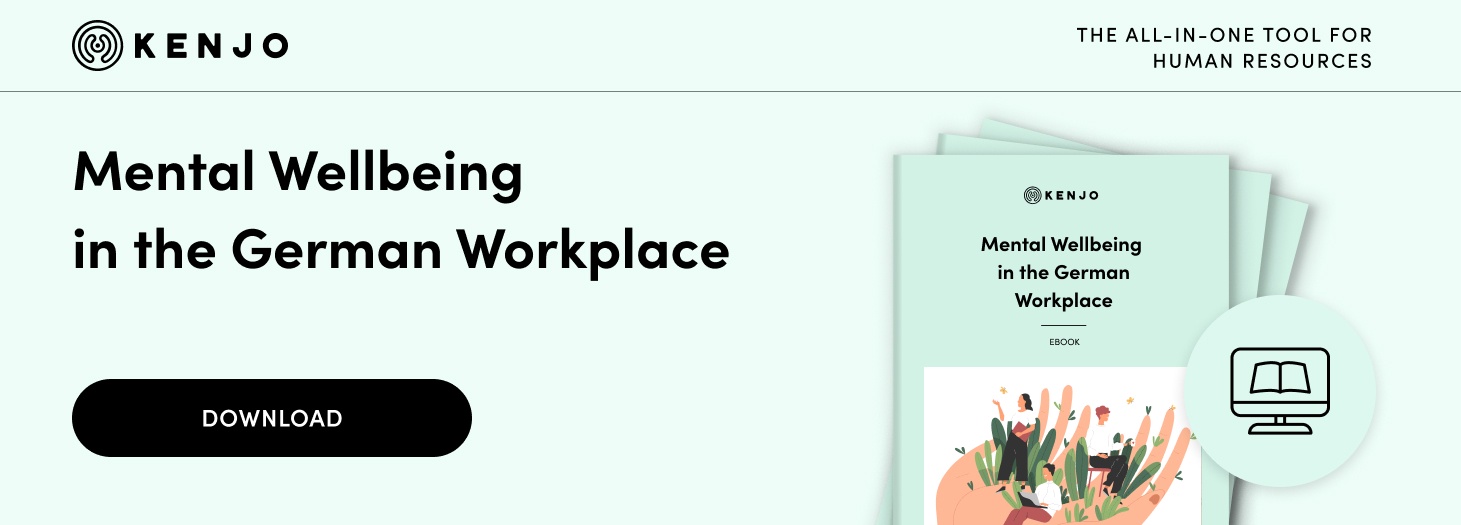Mental health and the impact of remote working

After months of working remotely full-time, many employees start to notice a change in their mental health. Some feel stressed and battle feelings of isolation, others might feel the pressure to hustle 24/7. On top of that comes the stigma attached to mental health challenges. However, taking care of mental health is just as important as physical activity and eating nourishing food.
As leaders, we need to look at the whole wellbeing of our people and tune in to what is going on to help them. There’s quite a big difference between depression, anxiety, burnout, social angst, etc.
So before you hit rock bottom, we talked with Hilary Klassen, Co-Founder and CEO of bestselfy as well as Co-Founder of The Secret HR Society, on how to spot the signs of declining mental health and address the next steps.
How managers and leaders can keep their employees engaged during remote work
#1 Be the coach
Yes, jump in and be a people leader, you need to know what is really going on to keep individuals engaged. How? Start with asking deeper questions, your #1 daily question should be: “How are you? How are you really?”. Yes, specifically in that order.
This should not only be done in 1:1s, but also with short messages in the morning. Do this DAILY. Then, start with conversations that promote growth, every other week, asking them things such as:
- “What has gone really well for you recently?” (see #2 how to weave in their strengths)
- “What didn’t go so well?”
- “What do you want to improve on?”
- “What do you need from me as your manager?”
BTW coach, doing this once is not going to stick, you need to consistently embed this into your growth 1:1s as well. Keep track, measure, and be the catalyst to each person’s development and growth. Being their coach will keep the workplace feeling more human.
#2 Find out each person’s superpower
Finding out which top 3 to 5 strengths each employee brings to the table, via a personality assessment like bestselfy’s be5, will prompt a deeper conversation with employees. You can find out more about these strengths by asking questions such as:
- “So tell me how your “openness (to experience)” helped you achieve x?”
- Which tasks do you enjoy the most?”
- When are you at your best?”
- Which tasks give you the most energy?”
This can be achieved simply, by having each employee keep a journal of their strengths in action over the course of two weeks and then review this with you. Make sure you also keep a journal to note specific examples of when you saw their strengths in play and how they excelled. Then you should focus on aligning your team based on strengths, to let individuals do what they do best every day. We promise, you will start seeing higher engagement and top performance from all employees!
“Being your employee's coach will keep the workplace feeling more human.”
Hilary Klassen
Co-Founder & CEO - bestselfy
#3 Praise and recognise often
Figure out first how individuals want to receive praise and recognition – privately, publicly or a mixture of both – this is super important to tailor kudos to each individual. Based on research done on positive to negative interactions carried out in the 70s by Gottmann and team, we need 5 positive feedbacks/interactions to 1 negative one.
We, as humans, need affirmation to thrive and to be able to continue building self-confidence. This helps us to reach our best performance and foster personal and professional growth. When was the last time you gave positive feedback? Practice doing this more often – at least one time per day.
How managers and leaders can keep their employees motivated during remote work
#1 Encourage self-motivation
Did you know that it’s not actually possible to motivate people?
Motivation should always be intrinsic (that is, motivation determined by each individual) and brought to life in the work setting. You can, however, facilitate motivation. Daniel Pink outlines this research perfectly in his book “Drive”. You need to focus on three key factors to build an intrinsically motivated team:
- Autonomy – employees are trusted and encouraged to take ownership of their own work and skill development (see above how to be their coach).
- Mastery – employees see no limits to their potential and are given the tools they need to continue to improve their skills. Can you let them work on a passion project or cross-function with another team? How do you share learning often?
- Purpose – employees are encouraged to use their skills to achieve a "greater" purpose – how do they see their work aligned to objectives and vision, and the company’s mission? What about aligning groups of people who want to do something outside of work for a "good cause"? How can you be an ally to make this happen? Here’s a hint: start with yourself and get a group together.
#2 Facilitate connection
Talk less, orchestrate more. Set up a weekly ‘Team Sync’, create a light agenda of highlights of the week when everyone participates and make sure to stick to making this happen (yes, that meeting with your boss can wait!). Within the Team Sync, you should start with an “All Share” where you put out a weekly reflection question or icebreaker in order to prompt team connectivity.
Some great ones during these times are:
- “If you could have dinner with somebody who inspires you the most, who would this be?”
- “What’s your favourite place to travel to?”
- “What is your favourite strength and why?”
Even for out-of-work events, forget trying to force the team to do a virtual pub quiz. Instead, ask them how they might want to connect. What are some of the team’s interests and/or activities? Who will take ownership to get something started? Be mindful and inclusive around time, specifically for caregivers, parents, and individuals who have other commitments. If the team can’t find a suitable time for everyone, rotate days/times. However, making a Team Sync a priority will bring about more connectivity within the team.
#3 Foster belonging
Share more about how you are feeling, what is going on with your competing priorities, and share times when you are or were not at your best or even when you made a mistake! Being able to share highs and lows will demonstrate to the team that you are self-aware, reflective and accepting of people for who they are and what they can and cannot do (yet).
It’s your job as an HR manager to create a positive team environment. Creating psychological safety at work promotes a culture of trust where everyone can voice their opinions and be their best selves. Creating a sense of belonging is essential in today’s ever-changing working world. Staying positive yourself and adopting a growth mindset will help others see their connection to work in a whole new, meaningful way.
Understanding the mental wellbeing of employees
Leaders and managers that are aware of signs and behaviours of employees that indicate that they might be struggling with their mental wellbeing will act more appropriately at work with them, ie. give them a mental health day off or reduce their workload, adjust their deadline etc.
Ask permission to speak with an employee if they:
- Seem sullen, despondent and performance is off or has changed
- Allude to a fact, e.g., “I’ve had to deal with some personal problems lately.”
- Appear emotional like crying, change of eye contact, not putting on their video in discussions, remove themselves from social interactions (even digital)
- Request time/accommodation to see doctor/therapist
- Disclose they’re dealing with or dealt with anxiety, depression, burnout, etc.
Share a personal connection: Anxiety, depression, burnout (either yourself or someone close to you)
Don’t try to fix someone: Ask questions by starting with asking for permission, e.g., “may I ask you if you’ve been feeling down for the last week straight?” Let them talk and simply offer support by stating you care about them.
Ask even if you don’t know what it’s like:
- “Do you want some advice or should I just listen?”
- “Is there anything I can do to support you?”
- “Is it OK to ask you what anxiety feels like?”
More interesting articles on mental health and wellbeing in our blog:
- A mental health policy for the workplace - Why your organisation needs one
- Supporting mental health in the workplace and the link to meaningful work
- 10 tips for taking care of your employees’ mental health
About Hilary Klassen
Hilary Klassen believes in positive human interactions for top performance and wellbeing. As an entrepreneur, founder and CEO, HR Leader and Coach, she has worked with startups and corporations in Europe, USA, Asia, and the Middle East. She is also the founder of digital coaching agency bestselfy and the co-founder of The Secret HR Society, believing in networks and open source.

